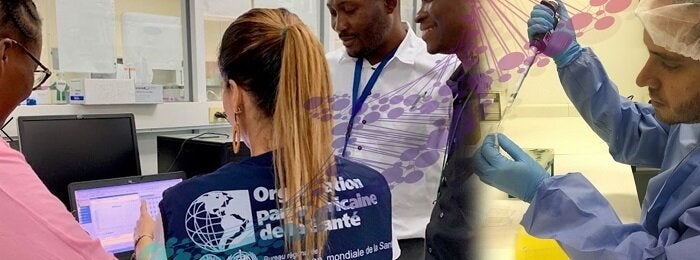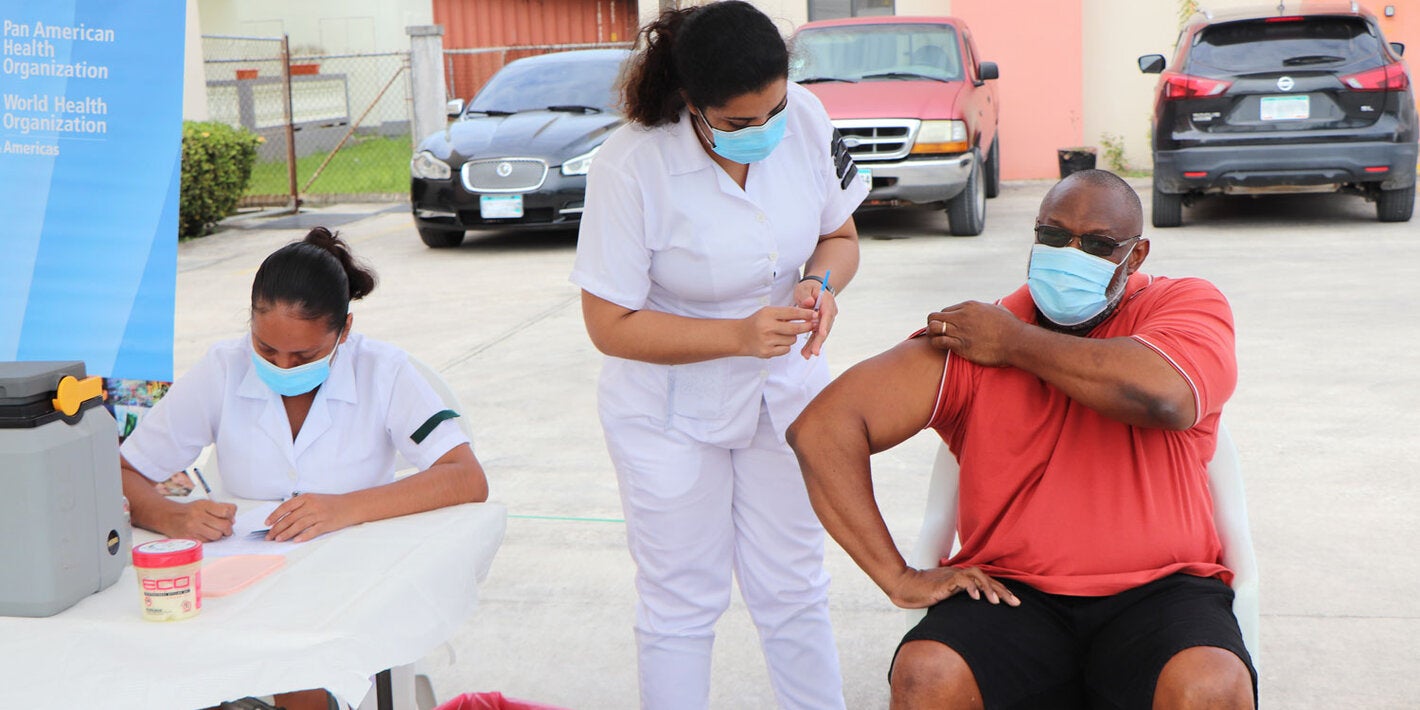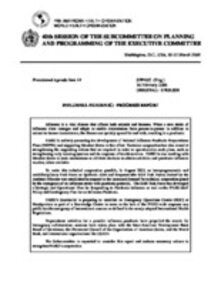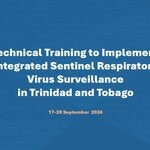Respiratory viruses such as influenza, SARS-CoV-2, RSV, and others pose significant public health challenges worldwide. The Pan American Health Organization (PAHO) is supporting its Member States to detect, monitor, prevent, and control these infections across the Americas.
This page serves as a comprehensive resource, offering up-to-date information, surveillance data, guidelines, and technical resources for the general public and to support healthcare professionals, policymakers, and researchers. It also describes how PAHO collaborates with countries to strengthen their capacity to detect and respond to respiratory virus outbreaks, protecting the health of communities across the region.
The organization supports countries in the surveillance, prevention, preparedness, and control of pandemic & epidemic-prone diseases through the development of evidence-based strategies to predict, prevent, detect, and respond to infectious hazards. It also ensures regional surveillance functions related to these hazards.
Major Action Lines:
- Pandemic & epidemic-prone diseases: Influenza, MERS, hemorrhagic fevers and hantavirus, yellow fever & emerging arboviruses, plague, cholera & epidemic-prone diarrheal diseases, leptospirosis, meningococcal disease.
- Expert networks and interventions for surveillance and response: epidemiology and modeling, laboratory, clinical management, and infection prevention & control.
- Framework of a national program for preventing and controlling diseases caused by respiratory viruses with epidemic and pandemic potential
- Preparedness and resilience for emerging threats: Module 1: planning for respiratory pathogen pandemics
- Regulation of the prevention, surveillance and control of respiratory viruses with epidemic and pandemic potential (Only available in Spanish)
- Global Epidemiological Surveillance Standards for Influenza. WHO;2014
- Operational Guidelines for Sentinel Severe Acute Respiratory Infection (SARI) Surveillance; 2014
- Global Influenza Strategy 2019-2030
- End-to-end integration of SARS-CoV-2 and influenza sentinel surveillance: revised interim guidance
- Final report Ad hoc expert consultation in the Region of the Americas: Challenges, gaps and next steps in COVID 19 surveillance and its integration into influenza and other respiratory viruses surveillance
- Influenza and Other Respiratory Viruses: Surveillance in the Americas 2021
- Epidemiological Alert - Influenza, respiratory syncytial virus and SARS-CoV-2 - 6 June 2023
- “Crafting the mosaic” A framework for resilient surveillance for respiratory viruses of epidemic and pandemic potential (Also available in French here and Portuguese here)
- National Influenza Centres
- Operational guidance for sharing seasonal influenza viruses with WHO Collaborating Centres
- Influenza and SARS-CoV-2 integrated surveillance laboratory testing algorithm (Available also in French)
- Samples from patients suspected of Influenza A/H5 LABORATORY TESTING ALGORITHM ( Also available in Portuguese)
- Protocol RSV laboratory diagnosis: positive control (gblock – RSV)
- Respiratory Syncytial Virus (RSV) laboratory diagnosis Technical note
- Respiratory sample collection for Influenza and other respiratory viruses diagnosis - Infographic
- Influenza and SARS-CoV-2 Integrated Surveillance. Laboratory Testing Algorithm
- Clinical care for severe acute respiratory infection: toolkit: COVID-19 adaptation (2020)
- WHO Model List of Essential Medicines for Children - 9th list (2023)
- Guidelines for the clinical management of severe illness from influenza virus infection (2021)
- Clinical management of COVID-19: Living guideline, 18 August (2023)
- Clinical care for severe acute respiratory infection: toolkit: COVID-19 adaptation (2020)
- SARI Clinical Management: Identifying High-Risk Patients - Video
- SARI Clinical Management: Prone Maneuveur - Video
- SARI Clinical Management: Mechanical Ventilation Basics - Video (Only available in Spanish)
- SARI Clinical Management: Mechanical Ventilation Advanced - Video (Only available in Spanish)
- SARInet training Experience for Clinical Management Care - Video (Portuguese, Spanish and English)
- Use of Personal Protection Equipment and Hand Washing (Only available in Spanish)
- Readiness for influenza during the COVID-19 pandemic: policy brief, 6 November 2020
- WHO SAGE Seasonal Influenza Vaccination Recommendations during the COVID-19 Pandemic
- Highlights from the Meeting of the Strategic Advisory Group of Experts (SAGE) on Immunization, 2021
- Guidelines for the clinical management of severe illness from influenza virus infections, WHO. 2022
- Considerations for implementing and adjusting public health and social measures in the context of COVID-19
- Influenza at the Human-Animal Interface: PAHO Recommendations to Strengthen Intersectoral Work for Surveillance, Early Detection, and Investigation, 2020
- Avian and Human Pandemic Influenza: Addressing the Need for Integration between Health and Agriculture in the Preparedness Plans in Latin America
- Strengthening Intersectoral Work for Influenza in the Human-Animal Interface in the Region of the Americas. May 2023: Technical Questions and Answers. May 2023.
- Epidemiological Alert: Outbreaks of avian influenza caused by influenza A(H5N1) in the Region of the Americas
- Strengthening the intersectoral work for Influenza at the Human Animal Interface in the Region of the Americas: Technical Questions and Answers
- Report of the Regional Consultation for the Strengthening of Intersectoral Work in the Human-Animal Interface of Influenza. March 2023
- Joint Risk Assessment Operational Tool (2021)
- Public health resource pack for countries experiencing outbreaks of influenza in animals (2023)
- PIP PC Preparedness High-Level Implementation Plan II 2018-2023
- Strengthening Pandemic Preparedness Planning for Respiratory Pathogens Policy Brief (New)
- Preparedness and resilience for emerging threats: Module 1: planning for respiratory pathogen pandemics (New)
- Response to Pandemic (H1N1) 2009 in the Americas: Lessons and Challenges (2010)
- Regional Workshop on Lessons Learned about Preparedness and Response during the COVID-19 Pandemic in the Region of the Americas - Buenos Aires, 16 to 19 of August 2022. (New)
























